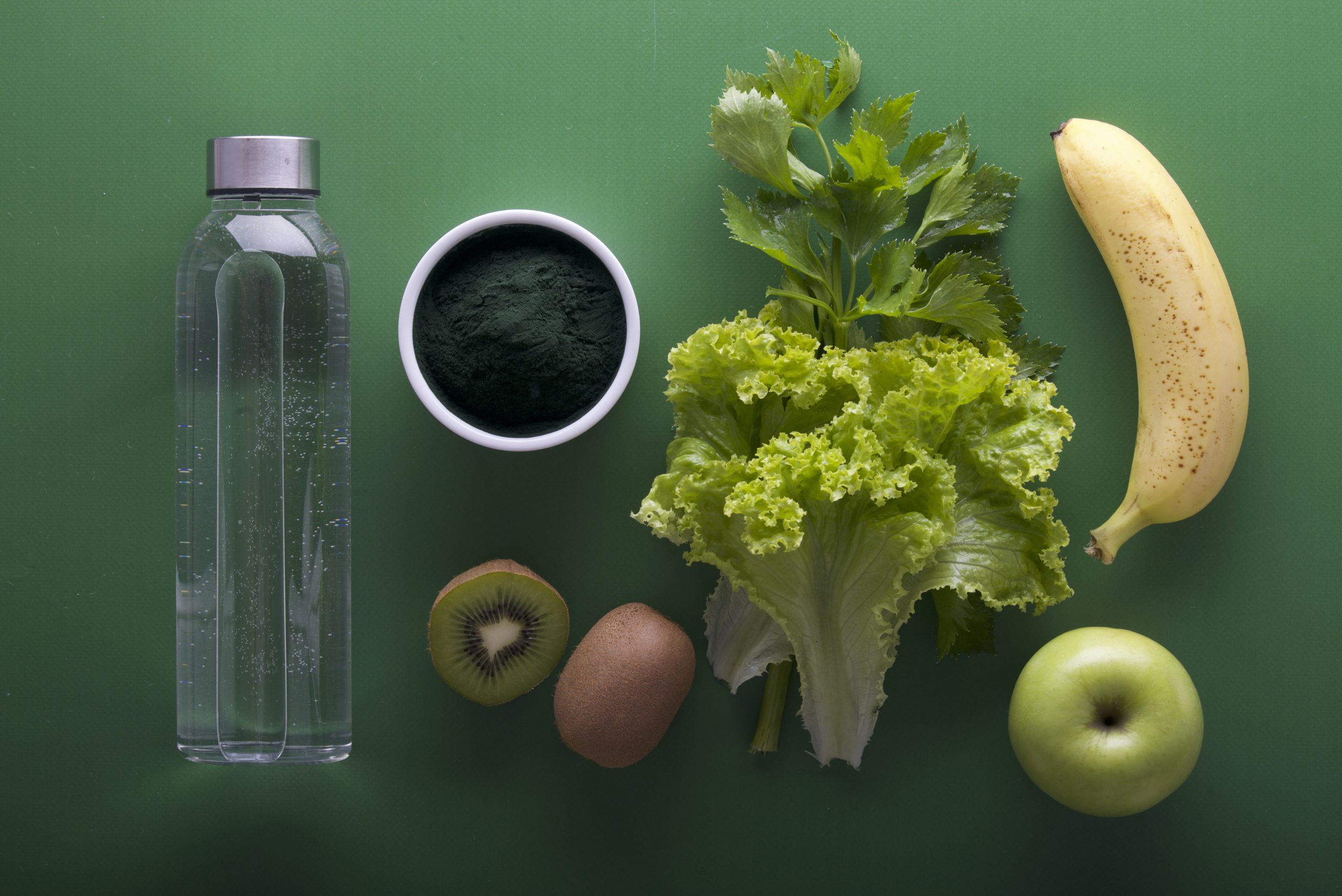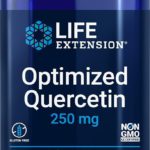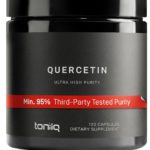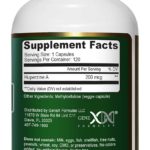If you’re looking to boost your intake of butyrate, a short-chain fatty acid that plays an important role in digestive health, you might be wondering which foods are high in this beneficial compound. Butyric acid is naturally produced in the body through the fermentation of dietary fibers by gut bacteria, but it can also be found in certain foods. Incorporating these foods into your diet may provide additional support for gut health, immune function, and overall well-being. However, it’s always a good idea to consult a healthcare professional before making any significant changes to your diet or supplement routine. So, let’s explore some of the foods high in butyrate and discover how they can contribute to a healthier you.
Foods That Naturally Contain Butyric Acid
Butyric acid, also known as butyrate, is a short-chain fatty acid that plays a crucial role in supporting digestive health and overall well-being. It is naturally produced in the human body through the fermentation of dietary fibers by gut bacteria. However, you can also find butyric acid in certain foods. Incorporating these foods into your diet can provide you with a natural source of butyric acid.
Butter
Butter is a delicious and versatile ingredient that contains small amounts of butyric acid. It is made from the cream of milk and has been used in cooking and baking for centuries. While butter is a source of butyric acid, it is important to consume it in moderation due to its high saturated fat content.
Ghee
Ghee, a clarified form of butter, is another food that naturally contains butyric acid. It is commonly used in Indian cuisine and is known for its rich, nutty flavor. Ghee has a higher smoke point than butter, making it a popular choice for cooking and frying.
Cheese
Cheese is a dairy product that contains varying amounts of butyric acid, depending on the type. Some types of cheese that are particularly high in butyrate include Parmesan, Cheddar, Swiss, Mozzarella, and Gouda. Cheese is not only a good source of butyric acid but also provides essential nutrients like calcium and protein. However, it’s important to consume cheese in moderation due to its calorie and fat content.
Yogurt
Yogurt is a fermented dairy product that contains beneficial bacteria known as probiotics. These bacteria help to promote a healthy balance of gut flora, which can contribute to the production of butyric acid. Greek yogurt, in particular, is a good choice as it undergoes a straining process that removes excess liquid, resulting in a thicker and creamier texture.
Milk
Milk is a staple food for many, especially children, and it also contains small amounts of butyric acid. While milk can provide a natural source of butyric acid, it’s important to note that lactose intolerance or dairy allergies can be common. Therefore, alternative milk options such as almond milk or oat milk can be considered.
Kefir
Kefir is a fermented milk drink that is similar to yogurt but has a thinner consistency. It contains a wide variety of beneficial bacteria and yeasts, which help to support a healthy gut microbiome. Kefir can be enjoyed on its own, added to smoothies, or used as a base for salad dressings.
Raw and Fermented Vegetables
Raw and fermented vegetables, such as sauerkraut and pickles, can also provide a natural source of butyric acid. These foods undergo a fermentation process that increases their nutritional value and promotes the growth of beneficial bacteria. Including a variety of raw and fermented vegetables in your diet can not only increase your intake of butyric acid but also provide important vitamins, minerals, and dietary fiber.
Sourdough Bread
Sourdough bread is a type of bread made from fermented dough. During the fermentation process, beneficial bacteria convert some of the carbohydrates into organic acids, including butyric acid. This gives sourdough bread its characteristic tangy flavor and can also provide a source of butyric acid.
Dark Chocolate
Dark chocolate, when consumed in moderation, can be a delicious and nutritious source of butyric acid. It contains high levels of cocoa, which is rich in antioxidants and beneficial compounds. Look for dark chocolate with a high cocoa content to maximize the potential butyric acid benefits.
Nuts and Seeds
Certain nuts and seeds, such as almonds, walnuts, flaxseeds, and chia seeds, contain small amounts of butyric acid. These nutrient-dense foods are also rich in healthy fats, fiber, and other important nutrients. Incorporating a variety of nuts and seeds into your diet can provide numerous health benefits, including a potential source of butyric acid.
Including these foods in your diet can help increase your intake of butyric acid naturally. However, it’s important to note that individual needs and dietary restrictions may vary. If you have any specific dietary concerns or health conditions, it’s best to consult with a healthcare professional or registered dietitian before making significant changes to your diet.
Butyrate Content in Different Types of Cheese
Cheese is a popular and versatile food that comes in many different varieties. While the taste and texture of cheese can vary widely, so can its butyrate content. Here are some examples of different types of cheese and their potential butyrate content:
Parmesan Cheese
Parmesan cheese is a hard and aged cheese that is known for its strong flavor. It is commonly used as a topping for pasta dishes and in grated form for added flavor. Parmesan cheese is one of the cheeses with the highest butyrate content, making it a great choice for those looking to increase their intake of this beneficial fatty acid.
Cheddar Cheese
Cheddar cheese is a widely consumed cheese that is known for its rich and slightly sharp taste. It is commonly used in sandwiches, burgers, and macaroni and cheese. Cheddar cheese also contains a moderate amount of butyrate, making it a good choice for those who enjoy its distinct flavor.
Swiss Cheese
Swiss cheese, also known as Emmental or Swiss Emmental, is a cheese characterized by its large holes and mild, nutty flavor. It is commonly used in sandwiches, fondues, and quiches. Swiss cheese contains a moderate amount of butyric acid, making it a suitable option for those looking to increase their intake.
Mozzarella Cheese
Mozzarella cheese is a soft and mild cheese that is often used in pizza, lasagna, and salads. While mozzarella cheese is not particularly high in butyrate compared to other cheeses, it can still contribute to your overall intake of this beneficial fatty acid.
Gouda Cheese
Gouda cheese is a semi-hard cheese that originated in the Netherlands. It is known for its rich, creamy texture and buttery flavor. Gouda cheese contains a moderate amount of butyric acid, making it a good option for those who enjoy its unique taste.
It’s important to note that the actual butyrate content in each type of cheese can vary depending on factors such as the milk source, aging process, and other production methods. However, including a variety of cheeses in your diet can contribute to your overall intake of butyric acid and provide a range of flavors and textures to enjoy.

Dairy Products as a Source of Butyrate
Dairy products play an important role in many people’s diets and can serve as a natural source of butyrate. Here are some examples of common dairy products and their potential butyrate content:
Butter
Butter is a popular dairy product that is made from the cream of milk. It is a versatile ingredient that is commonly used in cooking and baking. Butter contains small amounts of butyric acid, making it a natural source of this beneficial fatty acid.
Ghee
Ghee is a type of clarified butter that originated in ancient India. It is made by simmering butter to remove the water content and milk solids, resulting in a pure form of fat. Ghee has a slightly nutty flavor and a higher smoke point than butter, making it suitable for high-heat cooking. It also contains small amounts of butyric acid.
Cheese
Cheese is a dairy product that comes in many different varieties, each with its own flavor and texture. Certain types of cheese, such as Parmesan, Cheddar, Swiss, Mozzarella, and Gouda, contain varying amounts of butyric acid. Incorporating cheese into your diet can not only provide you with a natural source of butyrate but also contribute to your intake of calcium and protein.
Yogurt
Yogurt is a fermented dairy product that contains live and active cultures of bacteria known as probiotics. These probiotics help support a healthy balance of gut bacteria and can contribute to the production of butyric acid in the gut. Greek yogurt, in particular, is a good choice as it is strained to remove excess liquid, resulting in a creamier texture and higher concentration of nutrients.
Milk
Milk is a staple dairy product that is consumed by many people. While milk does not contain high levels of butyric acid compared to other foods, it can still contribute to your overall intake. However, it’s important to note that lactose intolerance or dairy allergies can be common, so alternative milk options such as almond milk or oat milk can be considered for those who cannot tolerate dairy.
Kefir
Kefir is a fermented milk drink that contains a wide variety of beneficial bacteria and yeasts. It is known for its tangy flavor and thin consistency. Kefir can be enjoyed on its own, added to smoothies, or used as a base for salad dressings. Like yogurt, kefir can contribute to the production of butyric acid in the gut due to its probiotic content.
Incorporating dairy products into your diet can provide a natural source of butyric acid and other important nutrients. However, it’s important to note that individual needs and dietary restrictions may vary. If you have any specific dietary concerns or health conditions, it’s best to consult with a healthcare professional or registered dietitian before making significant changes to your diet.
The Role of Fiber in Butyrate Production
Dietary fiber plays a vital role in the production of butyric acid in the gut. When you consume fiber-rich foods, they undergo fermentation by beneficial bacteria in the colon, leading to the production of butyrate and other short-chain fatty acids. Here are some examples of fiber sources that can contribute to butyrate production:
Dietary Fiber and Gut Bacteria
Dietary fiber is a type of carbohydrate that cannot be broken down by human enzymes. Instead, it passes through the digestive system mostly intact, reaching the colon where it serves as a fuel source for beneficial gut bacteria. Certain types of dietary fiber, such as resistant starch and inulin, are particularly effective at promoting the production of butyric acid.
Resistant Starch
Resistant starch is a type of starch that resists digestion in the small intestine and reaches the colon intact, where it is fermented by gut bacteria. Foods high in resistant starch include unripe bananas, cooked and cooled potatoes, beans, and lentils. Consuming these foods can stimulate the production of butyrate and other beneficial short-chain fatty acids in the colon.
Inulin and FOS
Inulin and fructooligosaccharides (FOS) are types of soluble fiber that are found in foods such as artichokes, onions, garlic, asparagus, and chicory root. These fibers can be fermented by gut bacteria, leading to the production of butyric acid. Including these foods in your diet can promote a healthy gut microbiome and butyrate production.
Oats and Whole Grains
Oats and whole grains are excellent sources of dietary fiber, including beta-glucan, which is a type of soluble fiber. Beta-glucan has been shown to promote the growth of beneficial bacteria in the gut and increase the production of butyric acid. Including oats, whole wheat, brown rice, and other whole grains in your diet can support butyrate production and overall gut health.
Fruits and Vegetables
Fruits and vegetables are rich in dietary fiber and can contribute to butyrate production in the gut. Examples of fiber-rich fruits and vegetables include berries, apples, pears, broccoli, Brussels sprouts, and kale. Aim to include a diverse range of fruits and vegetables in your diet to maximize your fiber intake and support a healthy gut microbiome.
Legumes and Beans
Legumes and beans, including chickpeas, lentils, black beans, and kidney beans, are excellent sources of dietary fiber. They also contain resistant starch, which can be fermented by gut bacteria to produce butyric acid. Adding legumes and beans to your meals can increase your fiber intake and promote the production of this beneficial fatty acid.
By including a variety of fiber-rich foods in your diet, you can support the production of butyric acid and other short-chain fatty acids in the gut. These fatty acids have been linked to various health benefits, including improved digestive health, reduced inflammation, and enhanced immune function.

Fermented Foods and Butyric Acid
Fermented foods have gained popularity in recent years for their potential health benefits, including their contribution to the production of butyric acid in the gut. Here are some examples of fermented foods that can provide a natural source of butyric acid:
Sauerkraut
Sauerkraut is a fermented cabbage dish that has been enjoyed for centuries. It is made by fermenting cabbage with salt, which promotes the growth of beneficial bacteria and the production of butyric acid. Sauerkraut is not only a good source of butyric acid but also provides important vitamins and minerals.
Kimchi
Kimchi is a traditional Korean side dish made from fermented vegetables, typically cabbage and radishes. It is seasoned with various spices and is known for its tangy and spicy flavor. Like sauerkraut, kimchi undergoes a fermentation process that can contribute to the production of butyric acid in the gut.
Pickles
Pickles are cucumbers that have been preserved in a brine solution or naturally fermented. The fermentation process allows beneficial bacteria to flourish and convert the natural sugars in cucumbers into organic acids, including butyric acid. Pickles can be a tasty and crunchy addition to sandwiches, salads, or enjoyed as a snack.
Kombucha
Kombucha is a fermented tea beverage that has gained popularity in recent years. It is made by fermenting sweetened tea with a culture of bacteria and yeast. The fermentation process produces organic acids, including butyric acid, and gives kombucha its tangy and slightly effervescent taste. It is important to note that while kombucha can provide a source of butyric acid, it also contains small amounts of alcohol due to the fermentation process.
Miso
Miso is a traditional Japanese seasoning made from fermented soybeans, rice, or barley. It is commonly used in soups, marinades, and dressings. The fermentation process involved in making miso can contribute to the production of butyric acid and other beneficial compounds. Miso is also a good source of protein and essential minerals.
Tempeh
Tempeh is a fermented soybean product that originated in Indonesia. It has a firm texture and nutty flavor, making it a popular meat substitute for vegetarians and vegans. The fermentation process involved in making tempeh increases its nutritional value and can contribute to the production of butyric acid in the gut.
By incorporating fermented foods into your diet, you can increase your intake of butyric acid and support a healthy gut microbiome. However, it’s important to choose fermented foods that align with your dietary preferences and needs. For those with specific dietary restrictions or health conditions, it’s always a good idea to consult with a healthcare professional or registered dietitian.
The Impact of Cooking and Processing on Butyrate Levels
The cooking and processing of foods can have an impact on the levels of butyric acid they contain. Here are some examples of how different cooking and processing methods can affect butyrate levels in foods:
Raw vs. Cooked Vegetables
Raw vegetables generally have higher levels of butyric acid compared to cooked vegetables. Heat can cause some of the butyric acid to be lost during cooking, so consuming vegetables raw or lightly cooked can help preserve their butyrate content. However, it’s important to note that cooking can also increase the bioavailability of other nutrients in vegetables, so a combination of both raw and cooked vegetables is recommended for a balanced diet.
Effects of Pasteurization
Pasteurization is a process used to kill harmful bacteria in foods, particularly dairy products. While pasteurization helps ensure food safety, it can also have an impact on the levels of butyric acid in dairy products. Some studies suggest that pasteurization can lead to a decrease in butyric acid content, although the extent of this decrease may vary depending on the specific food and processing methods used.
Aging of Cheese
The aging process of cheese can also affect its butyrate content. As cheese ages, the bacteria present in the cheese continue to ferment the lactose and other components, resulting in higher levels of butyric acid and other organic acids. This is why aged cheeses, such as Parmesan, tend to have higher concentrations of butyrate compared to fresh cheeses.
Roasting and Baking
Roasting and baking foods can cause some loss of butyric acid due to the high temperatures involved. However, the exact impact can vary depending on the specific food and cooking time. While these cooking methods may result in some reduction in butyric acid levels, they can also enhance the flavors and textures of foods, making them enjoyable additions to a balanced diet.
Boiling and Steaming
Boiling and steaming are cooking methods that involve the use of water at lower temperatures. These methods generally cause minimal loss of butyric acid compared to higher-temperature cooking methods. While some butyric acid may be lost in the cooking water, steaming and boiling can help preserve the nutrient content of foods, including butyric acid.
It’s important to note that while cooking and processing methods can impact butyric acid levels, they can also affect the overall nutrient content and bioavailability of foods. It’s always a good idea to include a variety of cooking methods in your meal preparation to ensure a balance between flavor, texture, and nutrient content.

Other Potential Sources of Butyric Acid
While certain foods are well-known sources of butyric acid, there are other potential sources that may provide this beneficial fatty acid. Here are some examples:
Bone Broth
Bone broth is made by simmering animal bones and connective tissues, such as chicken or beef bones, for an extended period. The slow cooking process can release nutrients, including butyric acid, from the bones and tissues into the broth. Consuming bone broth can provide a natural source of butyric acid and other beneficial compounds.
Bovine Colostrum
Bovine colostrum is the first milk produced by cows after giving birth. It contains a rich concentration of antibodies, growth factors, and nutrients to support the growth and development of the calf. Bovine colostrum also contains butyric acid, which can contribute to its potential health benefits. While colostrum supplements are available, it’s important to choose high-quality sources and consult with a healthcare professional before incorporating them into your regimen.
Wild Game
Wild game, such as deer, elk, or duck, can provide a potential source of butyric acid. These animals typically have a different diet compared to conventionally raised livestock, resulting in differences in nutrient composition. While the butyrate content in wild game may vary, it can be a natural source of this beneficial fatty acid for those who consume these types of meats.
It’s important to note that the butyric acid content in these potential sources can vary and may not be as well-studied as other sources. Including a variety of foods in your diet can help ensure a diverse range of nutrients, including butyric acid.
Factors Affecting Butyric Acid Levels in Foods
Several factors can influence the levels of butyric acid in foods. Understanding these factors can provide insights into the variability of butyric acid content and help inform dietary choices. Here are some factors that can affect the levels of butyric acid in foods:
Fermentation
Fermentation is a process that involves the breakdown of carbohydrates by microorganisms, including bacteria, yeast, and molds. This process can result in the production of butyric acid and other short-chain fatty acids. Foods that undergo fermentation, such as sauerkraut, kimchi, and yogurt, can have higher levels of butyric acid compared to non-fermented foods.
Gut Bacteria
The composition of gut bacteria can vary from person to person and can influence the production and availability of butyric acid. A healthy gut microbiome that includes a diverse range of beneficial bacteria is more likely to produce butyric acid through the fermentation of dietary fibers. Factors such as diet, antibiotic use, and overall health can affect the composition of gut bacteria.
Animal Feed
The diet of animals can impact the nutrient composition of animal-derived foods, including the levels of butyric acid. For example, animals that are fed a diet high in fiber, such as grass-fed cows, may produce meat or dairy products with higher levels of butyric acid compared to animals fed a predominantly grain-based diet. Choosing high-quality, pasture-raised animal products may provide a potential source of butyric acid.
Processing Methods
Food processing methods, such as pasteurization, aging, cooking, and storage, can influence the levels of butyric acid in foods. For example, aging cheese can increase its butyrate content, whereas high-temperature cooking methods can result in some loss of butyric acid. The extent of these effects can vary depending on the specific food and processing methods used.
It’s important to consider these factors when choosing foods as sources of butyric acid. By prioritizing foods that undergo fermentation, are sourced from animals on high-fiber diets, and have undergone minimal processing, you may increase your intake of this beneficial fatty acid.

Health Benefits of Butyric Acid
Butyric acid, also known as butyrate, offers several health benefits due to its unique biological properties. Here are some potential health benefits associated with butyric acid:
Supports Digestive Health
Butyric acid plays a crucial role in supporting digestive health. It is the primary energy source for the cells lining the colon, helping to promote their growth, function, and integrity. Research suggests that butyric acid can help improve gut barrier function, reduce inflammation in the gut, and support the growth of beneficial gut bacteria. These effects can contribute to a healthy digestive system and may help alleviate symptoms of digestive disorders, such as irritable bowel syndrome (IBS) and inflammatory bowel disease (IBD).
Anti-inflammatory Effects
Butyric acid has been found to possess anti-inflammatory properties. It can help modulate the immune response and reduce the production of pro-inflammatory compounds in the body. Chronic inflammation has been linked to a variety of health conditions, including cardiovascular disease, diabetes, and certain types of cancer. By reducing inflammation, butyric acid may help promote overall health and reduce the risk of chronic diseases.
Possible Mental Health Benefits
Emerging research suggests that butyric acid may have potential mental health benefits. The gut-brain connection is a growing area of study, and it is believed that the health of the gut microbiome can influence brain function and mental health. Some studies have found a correlation between alterations in gut bacteria and mental health conditions such as depression and anxiety. While more research is needed, butyric acid’s role in supporting gut health and reducing inflammation may contribute to its potential mental health benefits.
Immune System Modulation
Butyric acid has been shown to have immunomodulatory effects, meaning it can help regulate and balance the immune response. It can stimulate the production of regulatory T cells, which help control the immune system and prevent excessive inflammation. By promoting a healthy immune system, butyric acid may help protect against infections and support overall immune function.
While the health benefits of butyric acid are promising, it’s important to note that more research is needed to fully understand its effects on human health. Additionally, individual responses to butyric acid can vary, and the extent of its benefits may depend on factors such as overall diet, genetics, and pre-existing health conditions.
Considerations and Summary
Incorporating foods that naturally contain butyric acid into your diet can provide a natural source of this beneficial fatty acid. However, it’s important to consider some key considerations:
Consulting a Healthcare Professional
If you have pre-existing health conditions, dietary restrictions, or concerns about incorporating more butyric acid into your diet, it’s best to consult with a healthcare professional or registered dietitian. They can provide personalized advice based on your individual needs and help you make informed decisions about your diet.
Supplementing with Butyric Acid
Butyric acid supplements are also available in various forms, including capsules, powders, and liquid preparations. While they can be convenient, it’s important to note that the safety and efficacy of these supplements have not been well-established. If considering a butyric acid supplement, it’s recommended to consult with a healthcare professional before starting supplementation.
Pre-existing Health Conditions and Medications
If you have pre-existing health conditions or are taking medications, it’s important to consider potential interactions or contraindications before increasing your intake of butyric acid. Certain health conditions or medications may require you to limit or avoid certain foods or supplements. Consulting with a healthcare professional or registered dietitian can help you navigate these considerations.
In conclusion, butyric acid plays a crucial role in supporting digestive health and overall well-being. You can incorporate foods such as butter, cheese, yogurt, fermented vegetables, and dark chocolate into your diet to increase your intake of this beneficial fatty acid. Additionally, consuming fiber-rich foods, including whole grains, fruits, vegetables, and legumes, can promote the production of butyric acid in the gut. While the potential health benefits of butyric acid are promising, it’s important to consider individual needs, consult with a healthcare professional, and make dietary choices that align with your overall health and well-being.








